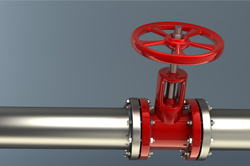Natural gas: a trend which remains remote
Tuesday, July 31, 2012

Amid widespread gloom over the world economy, a ray of hope is shining, in form of a revolution in the production of natural gas.
Increased output in turn is causing a drop in prices, of as much as 80% of the level of a decade ago, mostly thanks to new technology.
The issue is whether or not Central America will soon take advantage of the opportunity to produce or import gas, which not only costs less than petroleum, but whose combustion produces a third less carbon dioxide.
So-called “fracking” – the injection under high pressure of water and chemicals – is a cost-effective way of releasing natural gas from shale rock.
The biggest known deposits in the Americas of gas from shale rock are in Argentina, Mexico and the United States, where huge new pipelines are being built across the country.
Central America has not yet discovered deposits of natural gas, from shale or other sources, which leaves the option of importing it in liquid form.
Liquid natural gas is available from several nearby sources, including the United States, Colombia, and Trinidad and Tobago.
But the concept of importing gas is moving slowly, except in the Dominican Republic, where Virginia-based AES in 2010 inaugurated an LNG port, which supplies fuel to an adjacent power facility.
Houston-based Cutuco Energy has been trying to develop an import plan for El Salvador’s La Unión port.
Panama has agreed to import gas from Colombia, via an energy pipeline.
For its part, Costa Rica’s state petroleum company is proposing to build a floating LNG terminal, at the Caribbean port of Limón.
But all of these projects are still in the planning stage.
Meanwhile, the revolution is in danger of passing us by.
